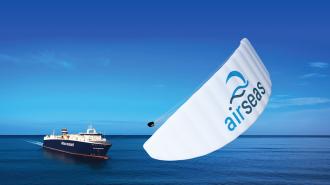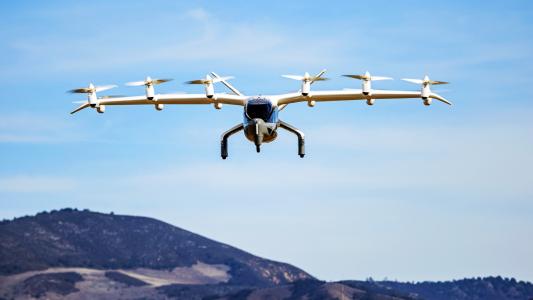There are two ways to make a fortune. The first is where, like Rolex, you sell a relatively small number of luxury, designer products at an eye-watering high price. The second is where, like Alibaba, you sell lots of things cheaply. Something analogous is true for greenhouse emissions. Some sectors are small yet produce tons of greenhouse emissions, such as steel and cement making. Other industries, though, are fairly carbon-efficient for what they do but are so large as to, collectively, contribute a great deal to greenhouse emissions.
In the latter camp, we find shipping. Last month, Freethink spoke with Rogier Eggers, who is working on sustainable technologies for the shipping industry at MARINrin, a Dutch research institute.
“Shipping is, relatively, a very efficient transport industry,” Eggers said. “If you think about how many tons of long distances are transported, it’s actually very good for greenhouse gases. However, we are shipping a lot, and, with other parts of society switching to other energy sources, shipping is going to be a relatively large contributor to global greenhouse gas emissions.”
This poses a problem for a sector that has committed to becoming net-neutral on greenhouse gas emissions by 2050. What options are available to the shipping industry going forward? Well, one option involves reviving a power source from the industry’s past: wind.
Let out the sheets and run with the wind
We have been sailing for millennia. The first maritime peoples quickly realized that using a sail and the wind was much easier than back-breaking, blister-building rowing.
“But the context now,” Eggers told us, “is really different. Today, ships always need to arrive in time, with much larger ships and much larger automation being required.” Burning fossil fuels is efficient and predictable. You don’t have to be a sea dog to know that the winds are notoriously fickle. A strong wind in the morning can dwindle to barely a breeze by lunch.
This is why Eggers and the team at Marin have been working so hard to improve wind-harnessing technologies. “There is actually a transfer of knowledge from yachting to commercial shipping,” Eggers told us, “especially from racing team teams active in the America’s Cup, the Ocean Race, and so on. There are people that have worked especially on wingsails, and we see wingsail products featured now on commercial ships.”
This evolution reflects a leap from traditional sailing methods to advanced wind propulsion technologies. It’s not only wingsails; it’s also rotating cylinders, airflow enhancement devices, and a more efficient ship design that accommodates wind propulsion. All of which marks a sophisticated reinterpretation of age-old wind harnessing methods.
The momentum for adopting such innovative solutions is gaining, albeit slowly. “We have been more or less doubling the number of ships equipped with wind propulsion throughout the year,” Eggers notes, showing a growing commitment within the industry, a commitment spurred by the advent of clean air and cleaner fuel regulations.
This interest in wind propulsion is not merely a nod to environmental stewardship but also an acknowledgment of its economic viability and efficiency in fuel saving, particularly in wind-favorable corridors. Pilot projects are demonstrating wind’s potential to save substantial fuel costs, the industry is poised at the brink of a paradigm shift,.
Unfavorable winds
There are still a great many challenges ahead for Eggers and companies like his.
First, as noted earlier, winds are mercurial things, and shipping cannot entirely rely on them. This is made worse in certain areas around the world. “Of course,” Eggers tells us, “we all realize that the application of [wind propulsion] is currently limited, and there are also areas, mostly around the equator, where it is not the solution.”
Second, wind propulsion technologies can only go so far. Alternative fuels work really well for short distances or ferries, but for large oceanic crossings, they fall short. As Eggers puts it, “the amount of energy that you need from such fuels [for huge distances] is simply not available at the moment.” Although this isn’t to say wind power is irrelevant in these instances, wind-assisted ship propulsion, or WASP, is still viable. This is where wind scaffolds or subsidizes other fuels. In these cases, WASP can reduce emissions and fuel consumption by 20–40%.
As with so many new technologies, there is a lot still to do. But the deeper, and more hopeful, point is that we’re getting there. Through innovation, collaboration between sectors, and a willingness to rethink traditional – even ancient – practices, the shipping industry is heading towards a more sustainable and environmentally friendly future. Even if there are some choppy waters along the way,.






